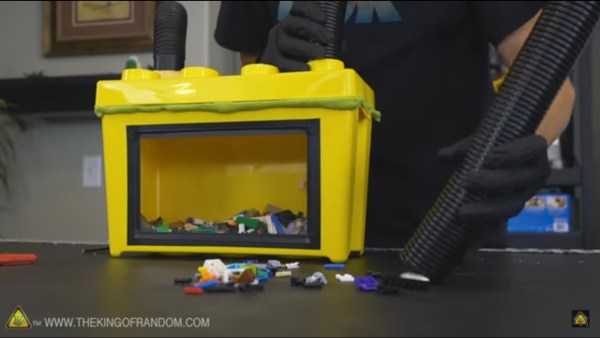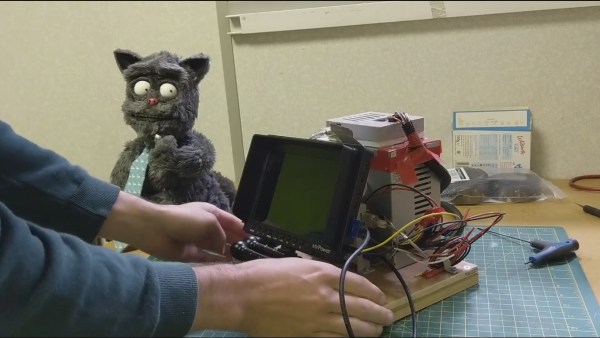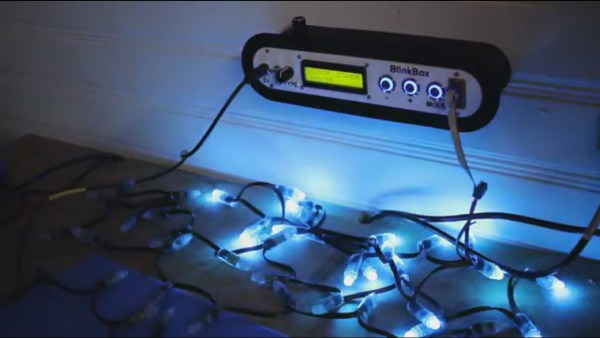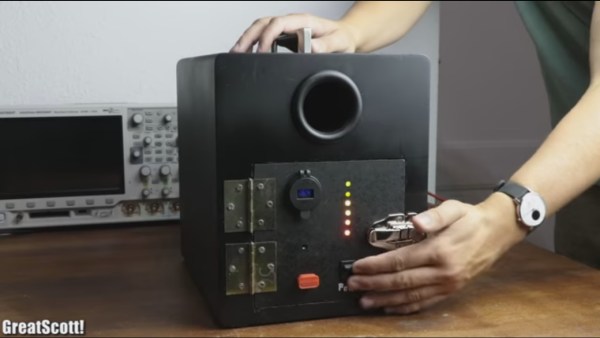The last chapter of the fourth book of the Hitch-Hiker’s Guide to the Galaxy trilogy mentions two hacks that made life pleasant enough to prevent a war: a super-fly that could fly out of the open half of a half-open window, and an off-switch for children. This is one of those types of hacks. Plus, it’s just an awesome idea, fun to watch, and possibly adaptable for the workshop.
 After the kids have gone to bed and LEGO bricks are scattered all over the floor, furniture, stairs (ouch), and everywhere else, wouldn’t it be nice if you could simply vacuum it all up directly into the LEGO box? This ingenious hack from [The King or Random] YouTube channel shows how to just that. They put two holes in opposite corners of the box’s lid, one a tight fit for a flexible intake hose and the other for the Shopvac hose, or a normal household vacuum cleaner hose if you prefer. A disk cut from flyscreen covers the Shopvac hole in case the suction is strong enough to pull the bricks back out of the box and into the Shopvac. They also make a gasket for the lid by mixing up some silicone sealant and cornstarch, the cornstarch is to prevent the cured mix from remaining sticky. We of course really like the version they made which has a window in the side of the box for watching the bricks as they fly in. Check out their build and the action in the video below.
After the kids have gone to bed and LEGO bricks are scattered all over the floor, furniture, stairs (ouch), and everywhere else, wouldn’t it be nice if you could simply vacuum it all up directly into the LEGO box? This ingenious hack from [The King or Random] YouTube channel shows how to just that. They put two holes in opposite corners of the box’s lid, one a tight fit for a flexible intake hose and the other for the Shopvac hose, or a normal household vacuum cleaner hose if you prefer. A disk cut from flyscreen covers the Shopvac hole in case the suction is strong enough to pull the bricks back out of the box and into the Shopvac. They also make a gasket for the lid by mixing up some silicone sealant and cornstarch, the cornstarch is to prevent the cured mix from remaining sticky. We of course really like the version they made which has a window in the side of the box for watching the bricks as they fly in. Check out their build and the action in the video below.
We wonder what other uses this can be put to. How about a container for sucking up a mess of loose hardware from a workbench or a garage floor for later sorting?
Where else can a vacuum come in handy? Here’s a vacuum table for holding down flexible material when using a laser cutter and another for holding parts on a CNC machine.
Continue reading “Self-Vacuuming LEGO Box Makes Life Better”







 The Delta Clipper was an unmanned demonstrator launch vehicle flown from 1993 to 1996 for testing vertical takeoff and landing (VTOL) single-stage to orbit (SSTO) technology. For anyone who watched SpaceX testing VTOL with its
The Delta Clipper was an unmanned demonstrator launch vehicle flown from 1993 to 1996 for testing vertical takeoff and landing (VTOL) single-stage to orbit (SSTO) technology. For anyone who watched SpaceX testing VTOL with its 











